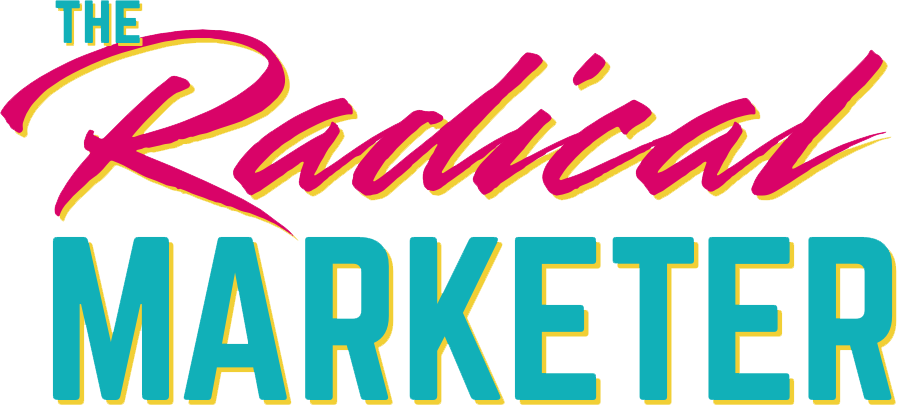The U.S. TikTok deal is nigh
Get a look at the group that's buying TikTok, the creepy policies they've planned, and what leftist businesses and nonprofits should prepare for.

Just when some of us were thinking to ourselves, “I wonder what happened to that TikTok ban…?” news about the U.S. deal with China is surfacing, and the news is, well, not great.
I haven't researched this exhaustively, but here’s a quick recap of what you need to know.
Major players in the U.S. TikTok deal are more of the same
Some of the names being thrown around for those who stand to acquire 80% of TikTok’s parent company, ByteDance include:
- Oracle, which is owned by Larry Ellison, a.k.a. the guy who recently passed Elon Musk to become the world’s richest person. If he’s not allowed to buy in, his son, David Ellison, is expected to take his place in the deal.
- Silver Lake Partners, a private equity firm – private equity often being a harbinger of layoffs, cost-cutting (usually at the expense of employees), and tanking morale at whatever company they happen to be acquiring at a given moment.
- Andreesen Horowitz (A16Z), another private equity firm that invests heavily in crypto, and is known for high turnover and toxic workplace culture.
- Jeff Yass of Susquehanna International, who has openly used his wealth to influence elections and promote far-right politics for over a decade.
In short, the U.S. TikTok will be controlled by a lineup of billionaire broligarchs who have openly conservative leanings, and are happy to cozy up with the creep currently occupying the White House.
U.S. users should expect to use a separate TikTok app
Among the details of the TikTok deal, there’s mention of a “potential” spinoff into a U.S.‑only version of the app. I’d say we should absolutely count on them forcing a U.S.-only app into place. Software engineers at ByteDance have already been duplicating their codebase and preparing for a split.
The U.S. version will reportedly be housed on servers in the U.S., with its own data and algorithm, and will be inaccessible on overseas devices. That plan looks alarmingly similar to how ByteDance runs Douyin, the China-only version of TikTok that’s also heavily regulated due to Chinese cybersecurity and media laws.
I probably don’t have to tell you that, if there’s one thing mainland China isn’t known for, it’s freedom of information.
What should TikTok users in the U.S. prepare for?
If TikTok is a major part of your livelihood or how you reach your audience, you’ll want take a look at a few major factors:
- Where in the world does your audience live? If they’re not in the U.S., they may not be able to see your content for much longer.
- What kind of content do you share? With a separate algorithm coming with the U.S.-only app–again, controlled by known Trump allies–we can likely expect more extreme right-wing views to get prioritized, while those of us with more community-minded leanings get pushed to the back burner.
- How does TikTok support your business? If you’re making money through TikTok creator programs and functionalities, you may not be able to count on those programs continuing to work as they currently do, not to mention your ability to access them.
In most scenarios, you’d be wise to start planning your exit strategy from the app.
Was it ever really about data security?
It’s worth remembering that the TikTok ban first surfaced as a response to concerns about China forcing ByteDance to hand over its U.S. user data. Those concerns were laughable from the jump, and only highlight that we should be more concerned about ANY government getting access to our user data via social media.
With the proposed plan for this U.S.-only version of the app, it’s pretty darned clear that it was never really about data security — it was about control and influence.
Social media companies have never been under any obligation to reveal how their algorithms work. They're private companies. I’ve seen firsthand how much business owners struggle to understand The Algorithm, to the point where they'll pay for exposure.
These companies don’t want us to know how it works, because our confusion is just part of their business model.
All of that said, if you continue using TikTok in the U.S., prepare to be more mindful and more skeptical about the information you see there – yes, even more mindful than you’re already being about content online.
In the coming weeks, I’ll be digging into planning your exit from TikTok, including other channels to shift towards, and how to leave a social platform without losing your entire audience. Make sure to subscribe so you don’t miss it.
Or, if you're looking for support with switching platforms right meow, check out check out The Social Shift, my equity-priced offering designed do just that.
Did you enjoy this article? Fuel my radical energies and buy me a snack:
1. Subscribe to The Radical Marketer.
You'll get musings on how to deal with online marketing and tech more radically and ethically, free to your inbox, every Tuesday. And, you'll get handy bonuses if you become a paid subscriber. Choose your tier here.
2. Get the Simplify + Sell Website Planner.
Our Website Planner takes the confusion out of what to say and where to say it on your website, so you can book more clients whether you DIY or hire a pro. Get your copy of the planner.
3. Book Your Consultation with Team Upswept.
We didn't come to play! We deliver the full meal deal for your done-for-you online marketing needs, whether it's website, social, or email, or all three. Go get on our calendar!
